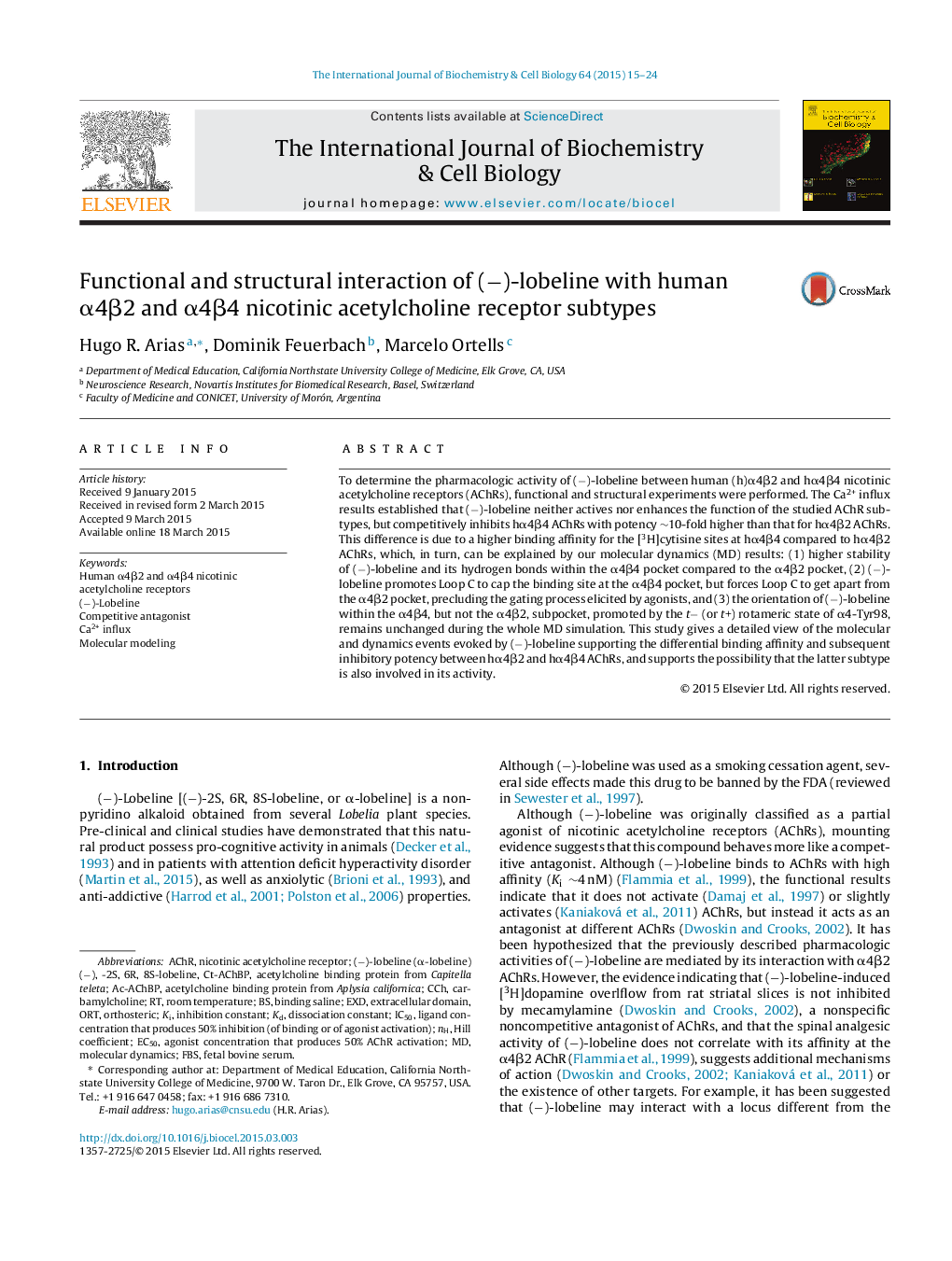| Article ID | Journal | Published Year | Pages | File Type |
|---|---|---|---|---|
| 8322628 | The International Journal of Biochemistry & Cell Biology | 2015 | 10 Pages |
Abstract
To determine the pharmacologic activity of (â)-lobeline between human (h)α4β2 and hα4β4 nicotinic acetylcholine receptors (AChRs), functional and structural experiments were performed. The Ca2+ influx results established that (â)-lobeline neither actives nor enhances the function of the studied AChR subtypes, but competitively inhibits hα4β4 AChRs with potency â¼10-fold higher than that for hα4β2 AChRs. This difference is due to a higher binding affinity for the [3H]cytisine sites at hα4β4 compared to hα4β2 AChRs, which, in turn, can be explained by our molecular dynamics (MD) results: (1) higher stability of (â)-lobeline and its hydrogen bonds within the α4β4 pocket compared to the α4β2 pocket, (2) (â)-lobeline promotes Loop C to cap the binding site at the α4β4 pocket, but forces Loop C to get apart from the α4β2 pocket, precluding the gating process elicited by agonists, and (3) the orientation of (â)-lobeline within the α4β4, but not the α4β2, subpocket, promoted by the tâ (or t+) rotameric state of α4-Tyr98, remains unchanged during the whole MD simulation. This study gives a detailed view of the molecular and dynamics events evoked by (â)-lobeline supporting the differential binding affinity and subsequent inhibitory potency between hα4β2 and hα4β4 AChRs, and supports the possibility that the latter subtype is also involved in its activity.
Keywords
Related Topics
Life Sciences
Biochemistry, Genetics and Molecular Biology
Biochemistry
Authors
Hugo R. Arias, Dominik Feuerbach, Marcelo Ortells,
